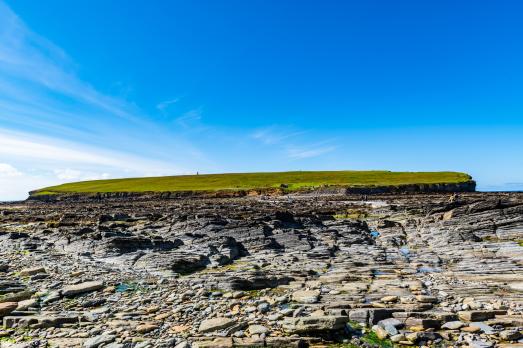Edge of the world
Surreal, beautiful, remote
by Sarah Crossland, Engagement Manager
There is always something magical about visiting a tidal island church. The incredible rhythm, the ebb and flow of the sea, means these shape shifting islands are other worldly, mysterious.
The changing waves and natural or manmade causeways mean that timing is everything. For a few hours each day, low tide reveals a strip of land joining it to the mainland allowing access to these remotest of churches. Often visitors must walk across the beach, sometimes there is a driveable road.
The UK has just over 40 tidal islands, some large, many very small.
The best are home to unique churches and chapels, often with monastic beginnings and built for peace and tranquillity. The isolation of these seaside sanctuaries means many are also natural havens of flora and fauna. Their remoteness lends them an air of mystery and enshrines their place in local folklore.
They are wonderful places to visit.
But, always check the tide times, lest you be stranded out at sea when the waters rise again.

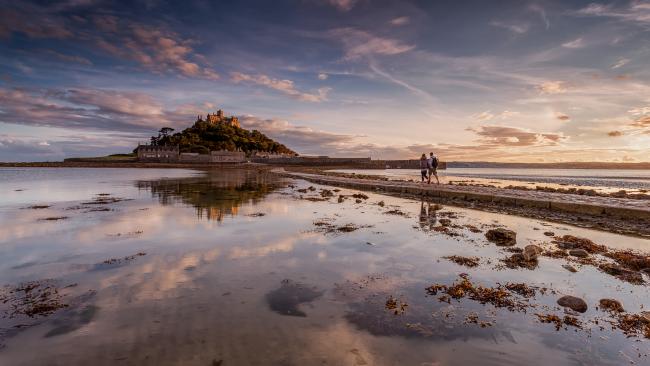
Walk in the footsteps of pilgrims
St Michaels Mount, an iconic rocky island just off Cornwall, is crowned by the breathtaking medieval church of St Michael and a castle. Reached by a granite causeway, used by pilgrims in the Middle Ages, legend tells that it was once the home of a giant named Cormoran, who would wade ashore and steal cattle when it got hungry.
Standing strong and serene through the ages, perched on a rocky hill and surrounded by blue waters, the church at the Mount’s summit dates back to the 12th century. Sheltering within the priory walls are 500 year old alabaster carvings of biblical scenes and a 15th century granite Lantern Cross.
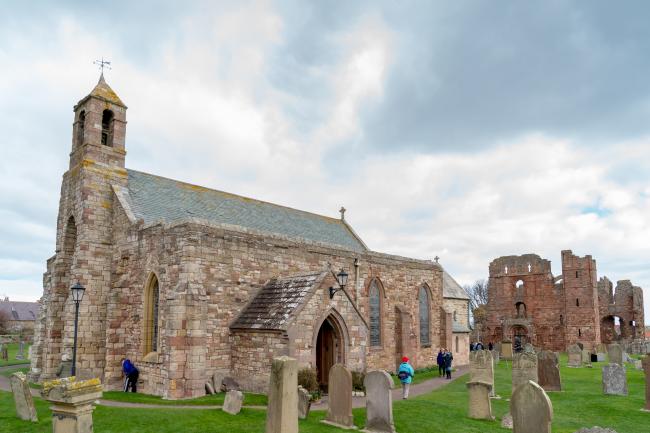
Cut off from the world
Cross a dramatic causeway to reach the island of Lindisfarne, on a journey that will stay in your memory forever. Lindisfarne is a tidal island cut off from the mainland twice a day by the rising seas. It is this peaceful isolation that originally appealed to the monks of Lindisfarne Priory, and still attracts over a million visitors every year.
Nearby, the church of St Mary the Virgin is reputed to stand on the site of the original monastery founded by Aidan, and parts of the structure date back to the 7th century, several hundred years before the appearance of the Priory.
True love is the tide that pulls out to sea, but always returns to kiss the shore at sunrise
: Shannon L Alder
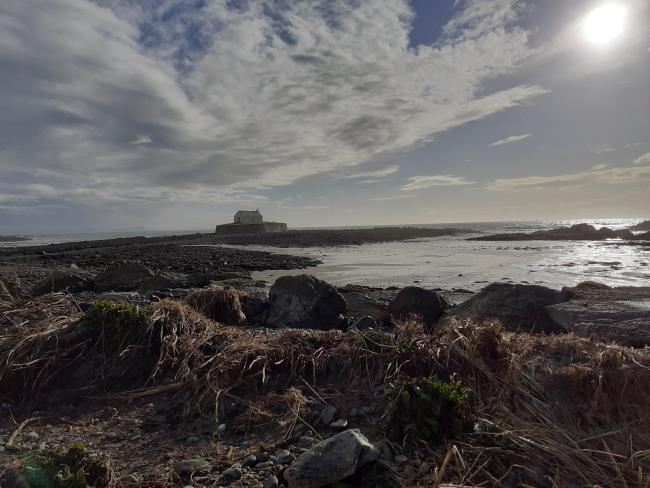
Eglwys bach y mor
The church in the sea, St Cwyfan is probably one of the most recognisable churches on Anglesey. Perched on a tiny island called Cribinau and encircled by a sea wall, this simple medieval church dates to the 12th century.
This may seem an odd and perilous place to build a church, but St Cwyfan's originally stood at the end of a peninsula. The sea slowly eroded the coast, turning it into an island. The waves continued to eat away at the island until, in the late 19th century, some of the graves surrounding the church began to fall into the sea. By this time this gorgeous church was disused and roofless. Luckily for us, local architect Harold Hughes, raised the money to save and restore it.

RabLawrence
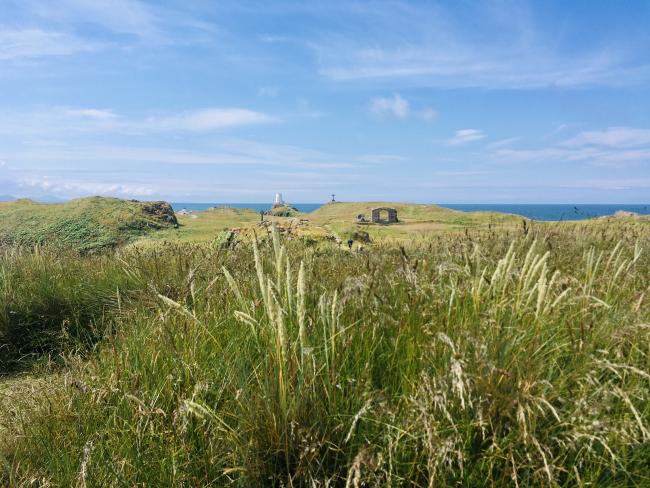
Welsh island of love
Llanddwyn Island (Ynys Llanddwyn) is a magical place. This rocky peninsula south of Anglesey offers incredible views of forests, beaches and mountains.
St Dwynwen retreated to the island in the early 5th century after an unhappy love affair. She became known as the patron saint of lovers, and pilgrimages were made to her holy well on the island. It was said that the faithfulness of a lover could be divined through the movements of some eels that lived in the freshwater well.
Visitors would leave offerings at her shrine. They funded a chapel, built in the 16th century on the site of Dwynwen's original chapel. Its ruins can still be seen today. The island is also home to some of the oldest volcanic rocks in Wales.
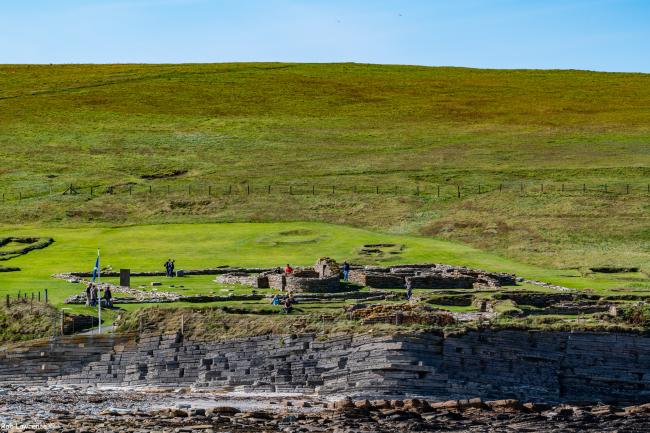
Pictish, norse and medieval
Reach the Brough of Birsay by causeway to explore Pictish, Norse and medieval remains. Brooches, rings and dress pins found on this very special tidal island suggest that it was a high status settlement for all of its life.
Excavations show that Picts lived here in the late 7th century. The symbol stone, inside the graveyard, bears four Pictish symbols and an unusual scene featuring three armed men. The Norse people settled here in the early 9th century, leaving a complex maze of walls between the later churchyard and the sea.
A small church and what appears to be a monastery were built in the 11th century. The remains of the Romanesque style church of St Peter has stone benches along the side walls of the nave, alcoves for altars on either side of the chancel entrance and a small cloister.
Once you get there, you can't go any farther, you've come to the end of things
: Agatha Christie
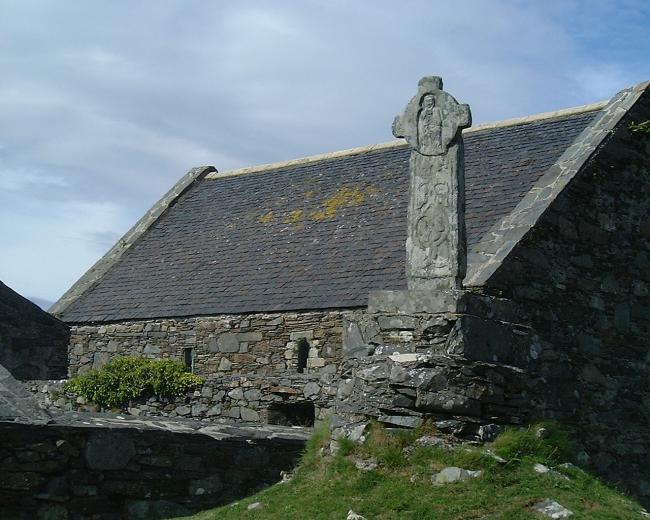
A wonderfully preserved priory
It is believed that Oronsay, in the Inner Hebrides, has its name from St Oran, the founder of the original Oronsay Priory in 563. But, it could also come from the Old Norse ‘island of the ebb tide’.
When the tide is favourable the walk from the south end of the The Strand is beautiful and offers stunning views towards the Isles of Jura and Islay as well as to the low lying skerries to the southwest.
Oronsay Priory was founded by the Augustinians in the early 14th century. When you make the pilgrimage, be sure to take the time for your visit, to enjoy the silence, listen to the singing birds and peacocks calling and let yourself be transferred to earlier times when Augustinian Monks lived, prayed and worked here.

An island off an island off an island
Hidden away within Strangford Lough is a pre Norman monastic enclosure, approached along narrow, twisting lanes and causeways. It is thought to have been founded by St Machaoi in the 5th century. Nendrum Monastic Site is enclosed by three concentric walls and contained a variety of buildings and functions such as houses, gardens, orchards, a cemetery, workshops, and of course religious buildings.
To reach Northern Ireland’s only tidal island you must brave two causeways, from the mainland to Reagh Island, and from there to Mahee Island. They can be crossed by car even at high tide, but we definitely recommend you check and plan around the tide times!
Surreal, beautiful, remote
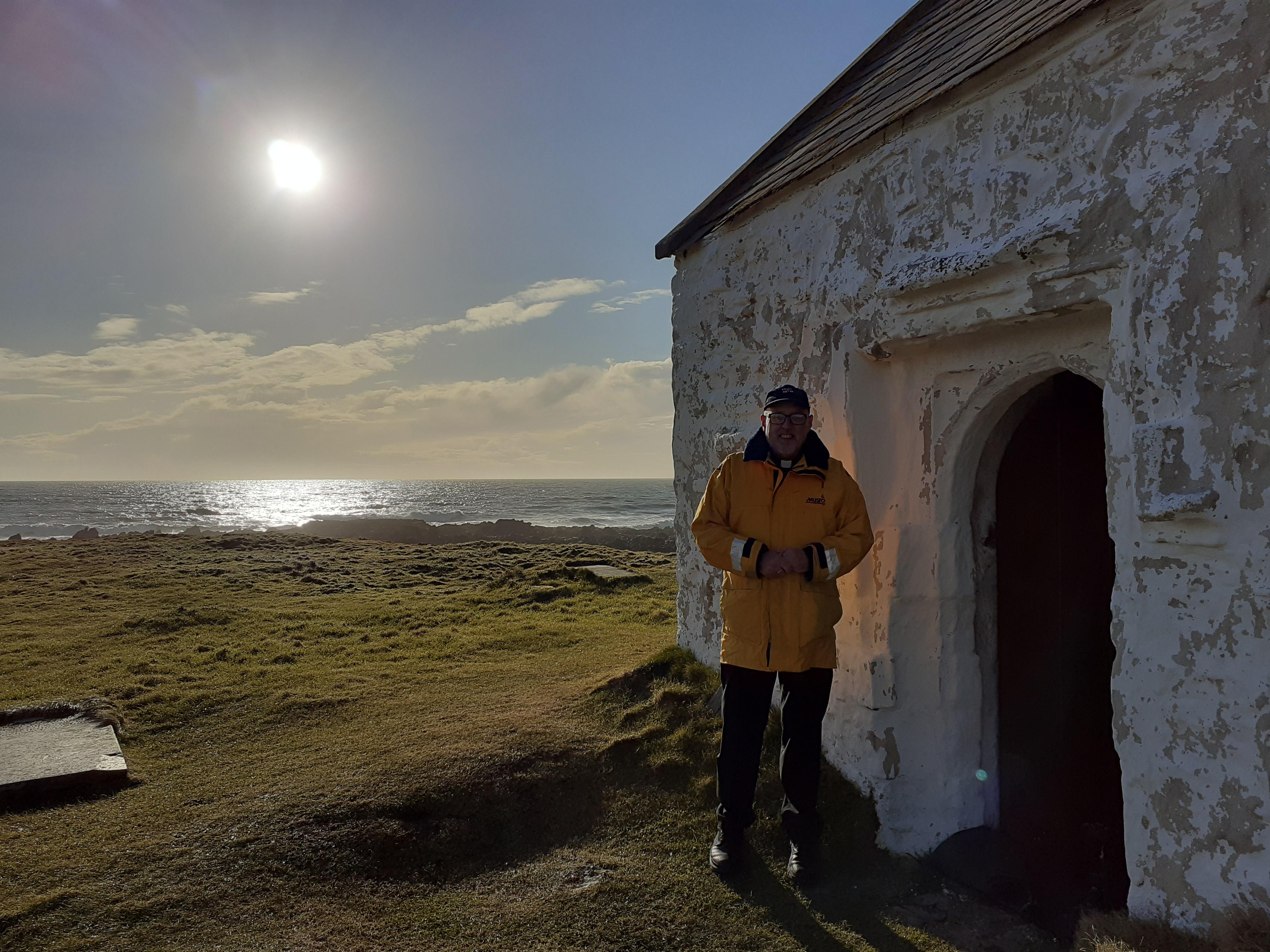
CarolineWelch





